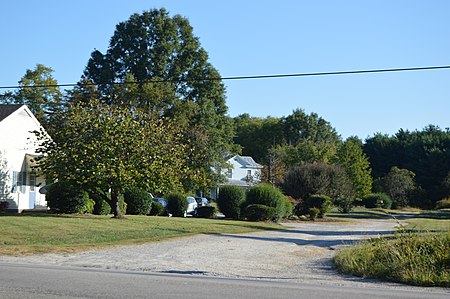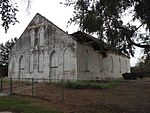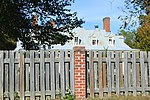Burlington (Petersburg, Virginia)
Central Virginia Registered Historic Place stubsHouses completed in 1750Houses in Dinwiddie County, VirginiaHouses on the National Register of Historic Places in VirginiaNational Register of Historic Places in Dinwiddie County, Virginia ... and 1 more
Plantation houses in Virginia

Burlington is a historic plantation house located near Petersburg, Dinwiddie County, Virginia. It was built about 1750, and is a 1+1⁄2-story frame dwelling with a center-passage, double-pile plan. It has a slate gable roof with dormers. A one-story wing was added during its restoration in 1954.It was listed on the National Register of Historic Places in 1976.
Excerpt from the Wikipedia article Burlington (Petersburg, Virginia) (License: CC BY-SA 3.0, Authors, Images).Burlington (Petersburg, Virginia)
Boydton Plank Road,
Geographical coordinates (GPS) Address Nearby Places Show on map
Geographical coordinates (GPS)
| Latitude | Longitude |
|---|---|
| N 37.221944444444 ° | E -77.447777777778 ° |
Address
Boydton Plank Road 26316
23803
Virginia, United States
Open on Google Maps











